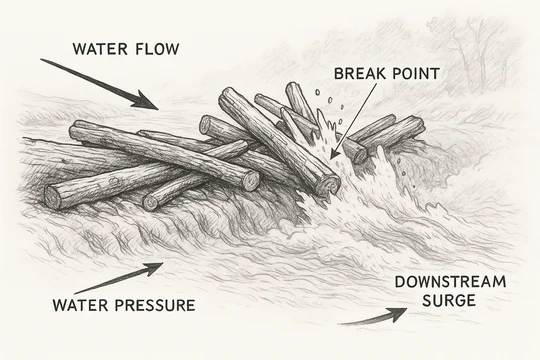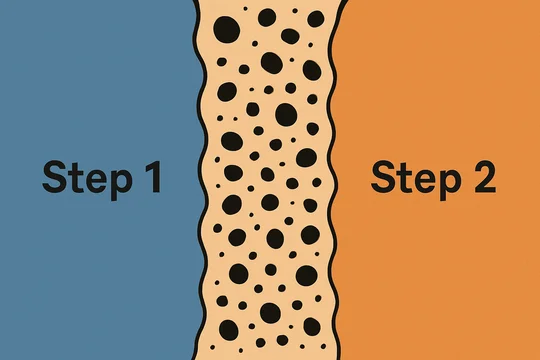
Back in February, Judge Andrews granted a motion to dismiss a patent with claims directed to the abstract ideas of "the recording, storing, delivering, and deleting of media content on a mobile device," and "remote control" of a mobile device. Clear Doc, Inc. v. RiversideFM, Inc., C.A. No. 21-1422-RGA, 2022 U.S. Dist. LEXIS 31168, at *15 (D. Del. Feb. 22, 2022).
He dismissed the claims on § 101 grounds, but granted leave to amend on the theory that the patentee could show an inventive concept:
Riverside's motion to dismiss is granted. Dismissal is without prejudice. OpenReel has requested leave to amend. (D.I. 46 at 19 n.1). I will grant that request, as it is possible OpenReel could successfully amend its complaint.
Clear Doc, Inc. v. RiversideFM, Inc., Civil Action No. 21-1422-RGA, 2022 U.S. Dist. LEXIS 31168, at *15 (D. Del. Feb. 22, 2022)
Id. at 19.
Taking the Court up on its offer, plaintiff amended their complaint to allege that certain feature constituted "inventive functions" under Alice—but the Court wasn't buying it:
The FAC has not alleged facts supporting the conclusion that the claims contain an unconventional technological solution as opposed to an abstract idea carried out with generic technology.
OpenReel argues that the claim's use of a concurrent "communication session" (i.e., a livestream) while recording content locally on [a] smartphone is an inventive concept. . . . It is not. It is, at most, simply combining abstract ideas-remotely controlling the recording process and using the smartphone to record it. In a way, this is just a rephrase of the abstract idea itself. The communication session is necessary to facilitate the remote-control process. The communication session's audio and video content transmissions allow for proper framing before the recording starts. . . . Remotely triggering local recording, storage, and deletion is the abstract idea itself.
He pointed out that the amended complaint focused on features of the product rather than their implementation:
While "specific, plausible factual allegations about why aspects of, the claims are not conventional can preclude dismissal, these allegations must add up to a technical implementation that is inventive. Cellspin Soft, Inc. v. Fitbit, Inc., 927 F.3d 1306, 1317-18 (Fed. Cir. 2019). Here, the FAC's allegations regarding the prior art merely address broad features rather than technical implementations.
The Court then expounded on the difference between features as opposed to their implementation:
While the FAC may allege a novel combination of features, there are no allegations that the features were combined in a way that provided a specific technological solution.
A software "feature" is something the software can do. For instance, a feature could be recording media content locally. A software feature can be implemented in a number of ways. It is the technical implementation that can be inventive. The feature itself is just an abstract idea. Allowing a patent on the feature would preempt all implementations of the idea, something the caselaw does not allow. Bascom, 827 F.3d at 1352. Even if features (such as local recording and livestreaming) have not been combined before, "a claim for a new abstract idea is still an abstract idea." Synopsys, Inc. v. Mentor Graphics Corp., 839 F.3d 1138, 1151 (Fed. Cir. 2016). There is nothing in the claims, specification, or FAC to suggest that the '500 patent claims an inventive implementation of local recording while livestreaming.
The Court also rejected the idea of "temporarily" using a mobile phone to store a video as an inventive concept, agreeing that the claims merely require a "trigger signal" to delete the content, and there was nothing new in the signal.
Dismissed—with Prejudice This Time
Finally, the Court dismissed the claims, this time with prejudice:
Riverside requests that I dismiss OpenReel' 18). OpenReel does not respond. (See D.1. 86). I assume that OpenReel has mustered its best factual support in the FAC. Since OpenReel has again come up short, I will dismiss the claims with prejudice.
ClearDoc, Inc. v. RiversideFM, Inc., C.A. No. 21-1422-RGA (D. Del. Aug. 15, 2022).
This suggests that in future cases Judge Andrews probably won't permit patentees to have more than one additional bite at the apple—but we'll have to see.
"Features" vs. "Implementations" = What vs. How?
The Court's discussion of "features" as opposed to "functions" caught my eye. Since Alice, courts seem to have sometimes struggled with the idea that functional claiming is permissible, but claims directed to an abstract idea, without an inventive concept, are not.
My read of the Court's description of "features" is that they are really software functions. "Record media content locally" could be a functional claim element, a feature, or—to use another way courts have expressed the idea—a description of what the software does without claiming how it does it.
I'm interested to see whether the analogy of software "features" vs. "implementations" catches on in § 101 jurisprudence like the "what" vs. "how" distinction has.
If you enjoyed this post, consider subscribing to receive free e-mail updates about new posts.






